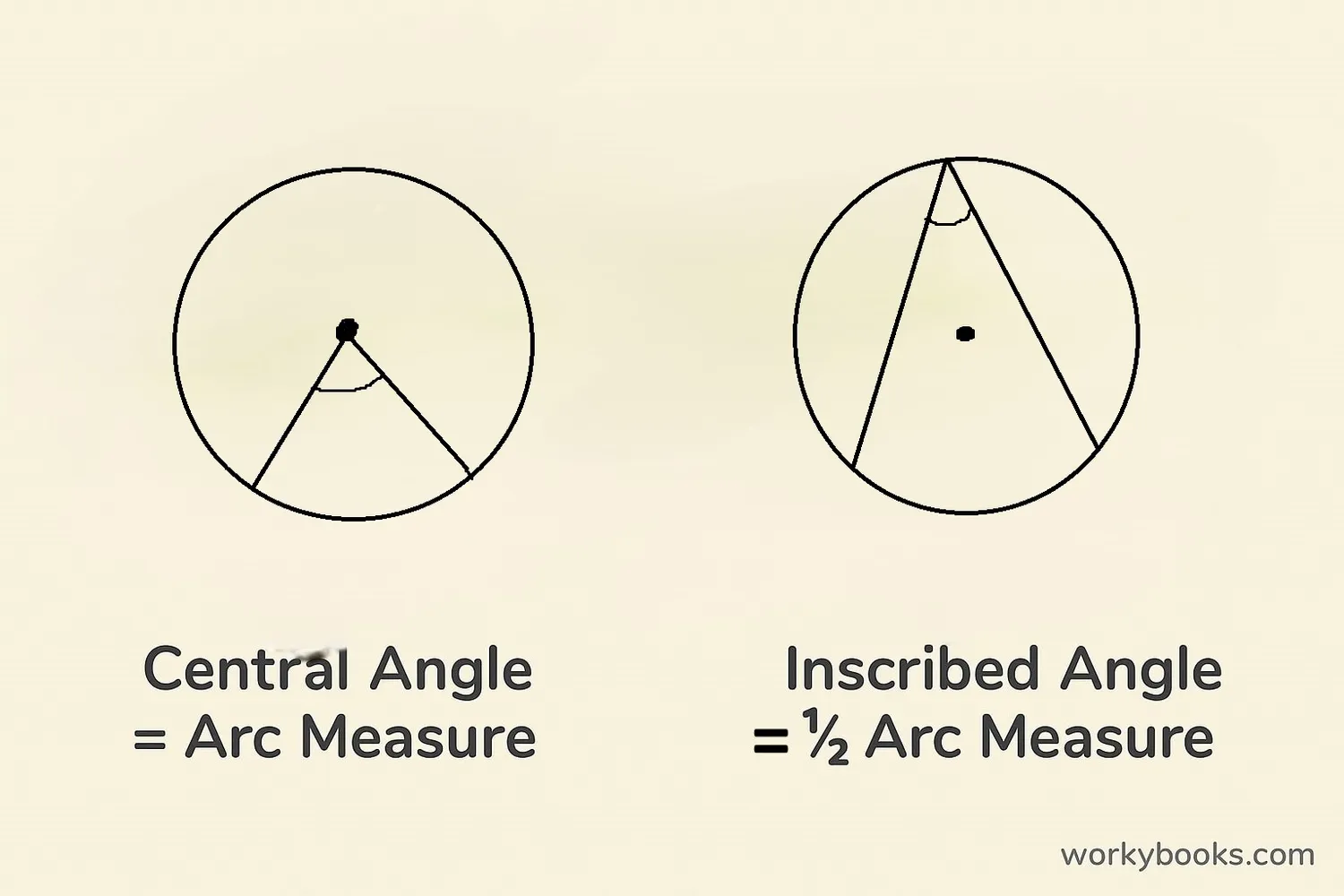Arcs in Geometry - Definition, Examples, Quiz, FAQ, Trivia
Learn about arcs in circles with simple explanations, visual examples, and practice activities
What is an Arc?
An arc is part of the circumference of a circle. Think of it as a curved piece of the circle's edge between two points.
Just like a slice of pizza is part of the whole pizza, an arc is a "slice" of the circle's boundary. The two points where the arc begins and ends are called its endpoints.
The length of an arc is a portion of the circle's circumference. To understand arcs, it helps to know these important circle parts:
- Circumference - The distance around the entire circle
- Radius - The distance from the center to any point on the circle
- Diameter - The distance across the circle through the center
Key Concept
Every circle has 360 degrees. An arc can be measured in degrees based on how much of the circle it covers.
Types of Arcs
There are two main types of arcs:
Minor Arc: The shorter arc between two points on a circle. It measures less than 180 degrees. We usually name minor arcs with just two letters, like arc AB.
Major Arc: The longer arc between two points on a circle. It measures more than 180 degrees. We name major arcs with three letters to show the direction, like arc ACB.
There's also a special type called a Semicircle, which is exactly half of a circle (180 degrees). It's the longest minor arc possible.
Remember
When two points are directly opposite each other on a circle, they form two semicircles - each 180 degrees.
Angles in Arcs

Angles help us measure arcs. There are two important angles related to arcs:
Central Angle: An angle formed by two radii (lines from center to circumference) at the center of the circle. The measure of a central angle equals the measure of its intercepted arc.
Inscribed Angle: An angle formed by two chords (lines connecting two points on the circle) that meet at a point on the circle. The measure of an inscribed angle is half the measure of its intercepted arc.
Here's how they work:
- If a central angle is 60°, its arc is also 60°
- If an inscribed angle is 30°, its arc is 60°
- The arc "intercepted" by an angle is the arc between the angle's two sides
Angle Fact
An angle inscribed in a semicircle is always a right angle (90°). This is called Thales' theorem.
Measuring Arcs
We can measure arcs in two ways:
Arc Measure: This is the angle at the center of the circle, measured in degrees. A full circle is 360°, so a semicircle is 180°.
Arc Length: This is the actual distance along the curved part of the arc. We calculate it using this formula:
Arc Length Formula
Where L = arc length, θ = central angle in degrees, r = radius, π ≈ 3.14159
Example: Calculate the length of a 90° arc in a circle with radius 10 cm.
Step 1: θ = 90°, r = 10 cm
Step 2: L = (90 ÷ 360) × 2 × π × 10
Step 3: L = (0.25) × 2 × 3.14159 × 10 ≈ 15.708 cm
The circumference of the full circle would be about 62.8 cm, so this 90° arc is one-fourth of that.
Remember
Arc measure is in degrees, while arc length is in regular distance units (cm, m, etc.).
Real-World Examples

Arcs are all around us! Here are some common examples:
Rainbows: Natural arcs formed by sunlight and water droplets
Pizza Slices: The curved edge of a pizza slice is an arc
Bridges: Many bridges have arched designs that follow circular arcs
Clocks: The path the tip of a clock's hand follows is an arc
Basketball Hoops: The rim of a basketball hoop is a circular arc
Playground Slides: Many slides have curved sections that form arcs
Activity
Look around your environment - how many arcs can you find? Clocks, plates, door handles, and even the moon's shape are all examples of arcs!
Arc Knowledge Quiz
Test what you've learned with this 5-question quiz. Choose the best answer for each question.
Frequently Asked Questions
Here are answers to common questions about arcs:
Arc Trivia
Discover interesting facts about arcs:
Ancient Measurements
The Babylonians first divided circles into 360 degrees around 1800 BC. They chose 360 because it has many divisors and matches their base-60 number system.
Perfect Circles in Nature
While perfect circles are rare in nature, arcs appear everywhere - from rainbows and moon crescents to the path of a swinging pendulum.
Architectural Arcs
The ancient Romans mastered the use of arches (which are arcs) in architecture. Their famous aqueducts used semicircular arches that distributed weight efficiently.
Planetary Motion
Planets move in elliptical orbits around the sun, creating arcs in their paths. Johannes Kepler discovered in the 1600s that planets sweep out equal areas in equal times along these arcs.


